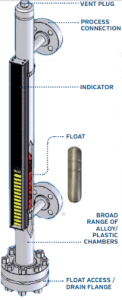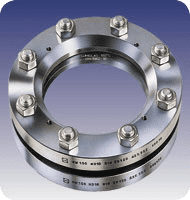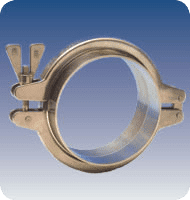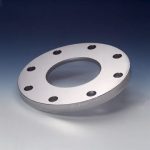How to specify an ATEX explosion-proof light for your sight glass
Posted on July 25, 2017 by LJ StarThe many ratings and standards bodies can be a confusing alphabet soup of acronyms… ATEX, UL, NEC, IEC, IP and NEMA. When is ATEX the right one?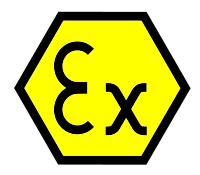
If you are considering an ATEX explosion-proof light for your sight glass, then you already know that a light with an ATEX rating will be safe to operate in a potentially explosive atmosphere.
First, forget about IP and NEMA ratings. Those define housings. For example, a NEMA 4 housing is dustproof and an IP67 housing is temporarily submersible. A good IP rating may help a light achieve ATEX status, as any sparks or points of heat stay inside its well-sealed housing, but it isn’t directly part of an explosion-proof standard.
Second, know which continent your application is on. ATEX is a directive issued by the European Commission, while in the United States the NEC has requirements for explosion-proof ratings that are usually tied to UL test standards. If your company or customers are global, and you want to standardize, then an ATEX rating may be the way to go.
The ATEX directive instructs employers with explosive atmospheres to classify hazardous work areas into zones, and instructs them to use equipment rated for those zones. It also gives guidance to equipment manufacturers about how to design products that can be certified for use on each zone. Note that although NEC and ATEX both use Zones, the NEC breaks protection into Classes and Divisions, and ATEX breaks protection into Groups and Categories.
ATEX is structured like this: Group, Sub-Group, Protection Method, Category, Zone, Temperature Class, and Equipment Protection Level.
Let’s decode the marking of our ESL-55 Ex, an ATEX-rated explosion-proof sight glass light that is an award-winner and has been one of our best sellers.
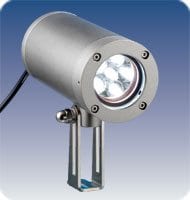
The Ex symbol indicates “explosion proof.” This is not an ATEX mark, but you’ll almost always see it on ATEX rated products because ATEX refers to the IEC 60079 standard that covers types of protection. If someone says “explosion-proof,” what exactly does that mean? You need a definition, and that’s what IEC 60079 does, defines how explosion proof is different from flameproof or intrinsically safe, etc. Explosion proof is what you want in a sight glass light.
- The II identifies Group II, intended for industrial non-mining applications. Mining has its own stringent requirements, as you might expect.
- The 2 means Category 2. Category 2 applies to areas where explosive atmospheres caused by vapors, gases, mists or dust occur occasionally.
- The G stands for gases, while D stands for dusts. That’s why there are two rows in the marking: the top row is the rating for explosive gas environments and the bottom row is the rating for explosive dust environments.
- The Ex stands for Explosion Proof.
- The d refers to the Protection Method defined in yet another standard, EC 60079. The d mark means Flameproof, that the sight glass light isn’t going to provide a flame which could be a source of ignition, primarily because of the light’s sealed housing.
- The IIC means that the light is safe to use around hydrogen (the most easily ignited gas). This rating also includes Groups IIA & IIB.
- The T6 is a temperature rating, the maximum surface temperature produced during fault conditions at 40°C ambient temperature. The value of T6 is 85°C.
- The Gb gives the Equipment Protection Level. These are defined as IEC 60079-0:2007. Gb refers to a high level of protection in explosive atmospheres caused by the presence of gas that is not the source of ignition in normal operation or when subject to expected malfunctions.
I’m not going to explain the second row of the marking, as it is similar to the first, but for being about dust.
Although ATEX relies on other standards for some key definitions, and although the definitions can get arcane, specifying the right ATEX sight glass light is not rocket science. If the application is in Europe, then someone there can tell you the Zone and the gases or dusts present. You can look at an ATEX certificate and decode it to make sure you are meeting that requirement.
Sight glass light suppliers like L.J. Star usually offer products that meet general application requirements. Nevertheless, understanding what ATEX means could be helpful to avoid a specifying mistake… a mistake that potentially could have catastrophic consequences. If you are unsure, call one of our knowledgeable sales professionals for help.
Subscribe to our Blog
Categories
- Certifications
- Company
- In The News
- Industry Information
- METAGLAS® Sight Glasses
- PackExpo 2020
- Sanitary Clamps
- Sanitary Fittings
- Sight Flow Indicator Benefits
- Sight Glass Applications
- Sight Glass Construction
- Sight Glass Lighting
- Sight Glass Lights
- Sight Glass Process Vessel Camera
- Sight Glasses
- Trade Shows
- Webcast
